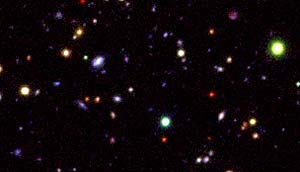European researchers made a deep observation towards the time when the galaxies were formed

Astronomers recently conducted the deepest observation of the universe in the near-infrared range ever made. They used the European Southern Observatory's Very Large Telescope (VLT) in Chile to scan a section of the sky previously imaged by the Hubble Space Telescope for over a hundred hours. This is the Anto telescope, which is 8.2 meters in diameter. The result - an image that revealed extremely distant galaxies, which can hardly be seen with the most sophisticated optical equipment of the Hubble Space Telescope.
Astronomer Marijn Franx from Leiden University said: "The VLT images have opened up a new field of research that was not accessible to observation before.
"The area in the sky that was studied is a small field with an area of one percent of the full moon. The Hubble Space Telescope observed it in full exposure, for almost a week, and it gave the deepest optical observation ever made of the sky.
Although the VLT observed less space than Zen, it could detect objects not seen in the Hubble's deep field. Astronomers will study the interesting images. Infrared observations of distant objects are important because the light emitted from them is shifted towards the infrared. From these observations, the astronomers discovered that the galaxies that existed in this era were quite large, and some of them were even spiral like nearby galaxies. This insight will have an impact on the attempts to understand the formation and evolution of galaxies.
